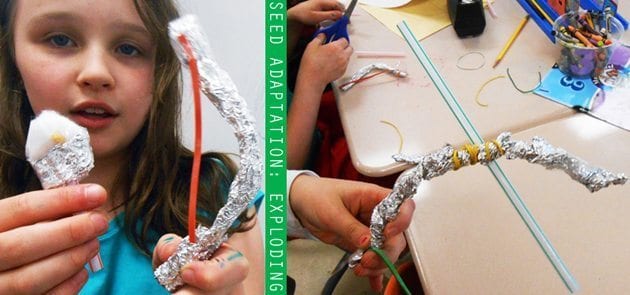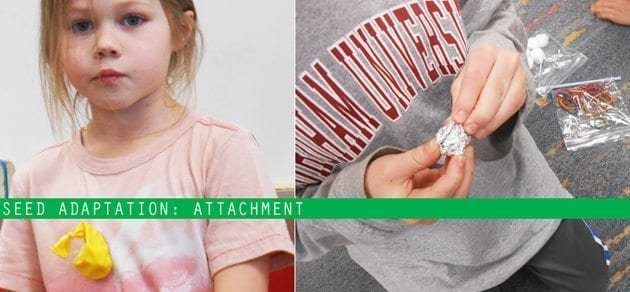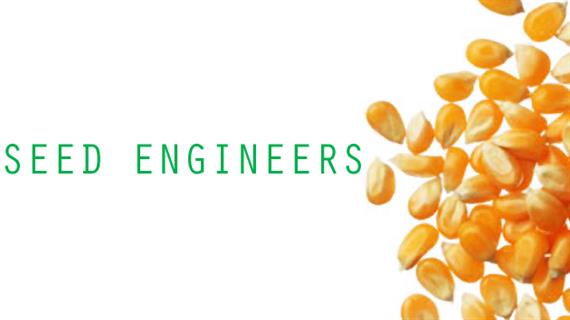After learning about the 7 different types of seed dispersal: water, wind, exploding (bursting) attachment, digestion, cultivation and gravity, students were challenged to adapt a popcorn kernel to disperse in one of the seven ways we learned about. See Studying Seeds in Third Grade for the 2 day lesson that precedes this project.
First we compared and contrasted a popcorn plant to a corn plant. We discovered that the tassles (pollen producing flowers) are different on the two plants. We examined a popcorn seed and discussed how the kernel could disperse. The students agreed that the seed dispersed by gravity or cultivation. Its physical attributes did not match the other five types of seed dispersal. However, we talked about how animals can carry seeds great distances and digestion.
I told the students that they were going to transform into Seed Engineers. Students were assigned a partner and pulled a seed dispersal card that told them what type of seed dispersal they were to represent.
– water
– wind
– exploding
– attachment
– digestion (seed that looked tempting to eat)
We did not make an invention for gravity or cultivation because the seed could already drop from its parent plant or be cultivated by humans.
I laid out a variety of materials for the students to work with:
balloons
box of tissues
paper clips
rubber bands
straws
yarn
ribbon
aluminum foil
tape
cotton balls
popsicle sticks
pipe cleaners
I told the students to look at the materials and sketch their design. After I approved their design, they constructed it! Below are the students’ seed adaptation inventions!

The students featured above were given the card: Exploding. They created a bow and arrow that shot their popcorn seed across the classroom.

These students designed a boat that would help their seed float on water!

The students above created a parachute to help their seed float in the air so the wind could carry it!

These students received the card: Attachment. They adapted their seed to make it attach to a human/animal.
Two students who received the card: Digestion were not present when the students created their seed devices. They were in charge of creating a seed that looked tempting to eat.
The students really enjoyed designing their seed adaptation inventions! This project reinforced seed dispersal vocabulary. After students created their inventions, they presented their seed devices to their peers. They explained how their invention worked and helped their seed disperse.
Erin Bittman is a second-/third-grade student teacher in a multi-grade classroom at a German Magnet School. She attends the University of Cincinnati. Check out her blog, E is for Explore!
